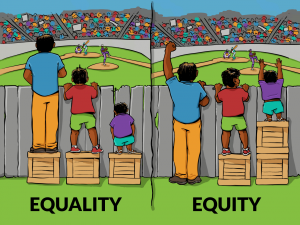Chapter 13- Don’t Let Fear Drive the Bus
Or the Pigeon! Just kidding!
For real though, fear can be a debilitating emotion. It causes many people to miss out on many amazing experiences. It also causes people to shelter others from potentially disastrous experiences as well. But there is always the question, what if nothing bad happens? Everything has a risk involved with it to a degree. If children, or adults for that matter, never take a risk, they never learn to deal with stress or develop the tools to help manage the adventure we call life. How can a child learn creativity or gain self-confidence if they are not left to take risks? Will they become critical thinkers? Will they have opportunities to problem solve? All of these are crucial skills to help us through life but without taking the risks associated with these tasks, we will never gain these important skills.
I would not classify myself as much of a risk taker, but when I look back on the last few years of my life, I can see all of the risks I have taken. They all came with a degree of fear- joining TIE-BC (I don’t really know anyone, I will have to public speak and put on professional development for people-am I qualified for this?), driving our boat on the ocean (What do I do when there are other boats around? How do I know I am going in the right direction? What do I do if I see a whale, or a rock, or a big wave, or a log?), going for surgery on my jaw (What am I going to look like afterwards? Is it going to hurt? How long am I going to have to be off of work?) and even going out on the lake or the ocean in a kayak (What if it tips? What if a whale surfaces right near us? What happens if the weather turns bad and we get stuck in huge waves/the tide?). If I had given in to these fears, I would not be where I am today,sitting in the airport in Vancouver, writing this blog post. I would not have gotten to play hide and seek in the marshy area of our favourite lake while kayaking with my family. I would not met all the wonderful people on the TIE-BC Executive. I would probably have sleep apnea and need a c-pap machine to sleep with. I would not be able to drive our boat back to the marina in the event of an emergency.
It is important to look at what is the driving force behind our behaviours. When we are frustrated with someone, what is behind it? Fear? Perfectionism? Stress? Once we can identify the driving factors, it is important to separate out the facts involved as well. Asking ourselves questions to help us determine an appropriate course of action rather than responding using our driving source will help us through the situation. These questions help us to widen our peripheral vision so we can maneuver through the situation in a way that is respectful of all involved.
Think about a situation in which you allowed fear, or some other factor, drive your behaviour. What was the driving factor? Now that you can look back, how would you change your behaviour? What could you do next time that would allow the situation to be resolved in a more positive fashion?
